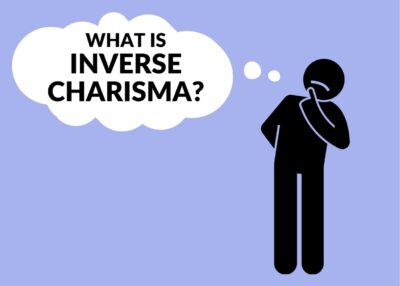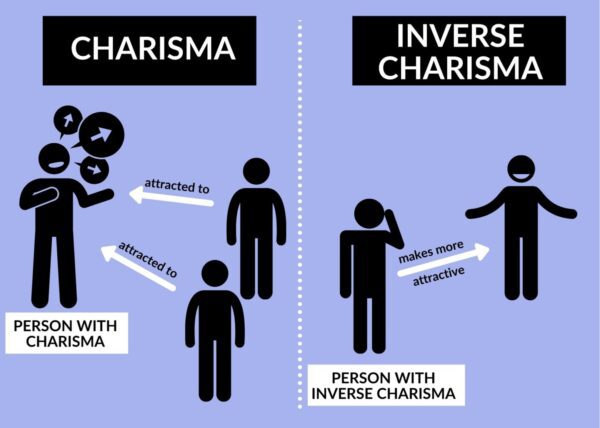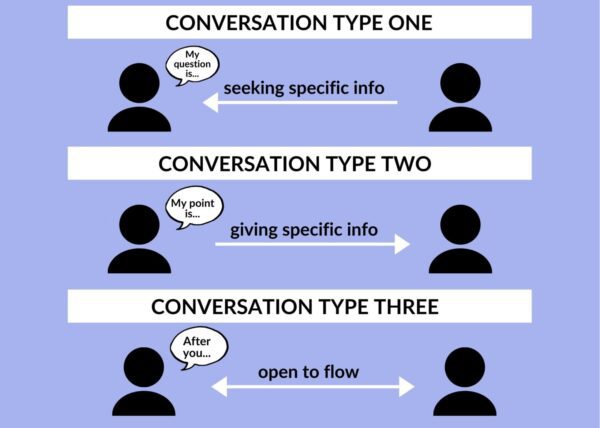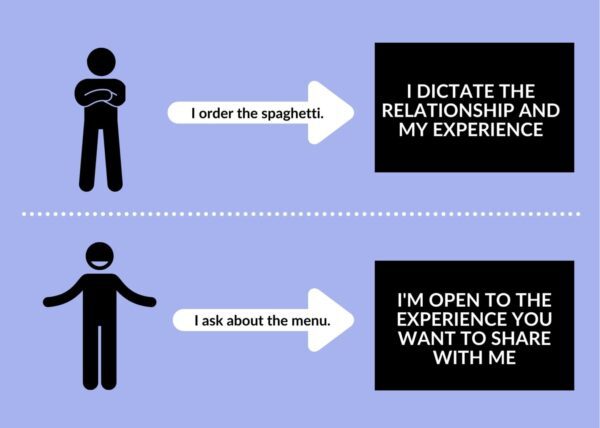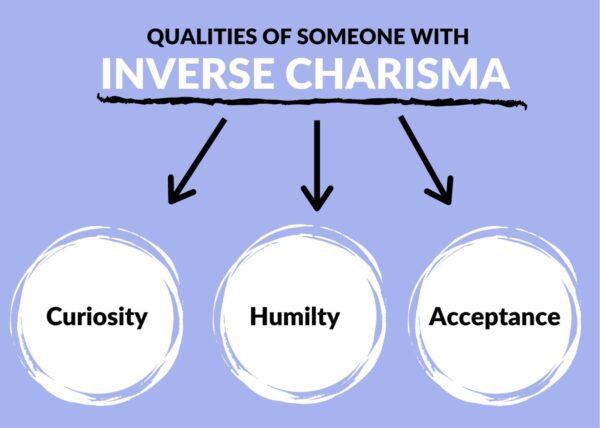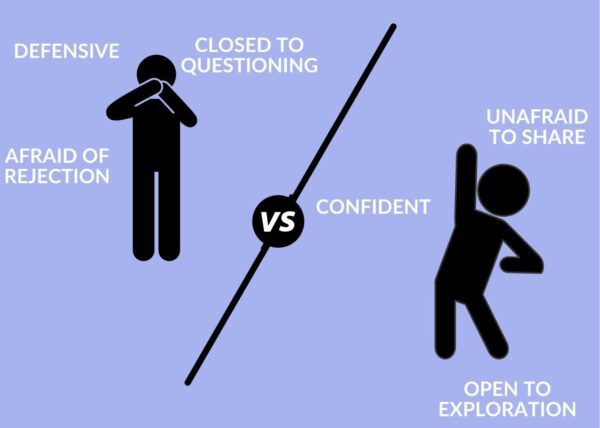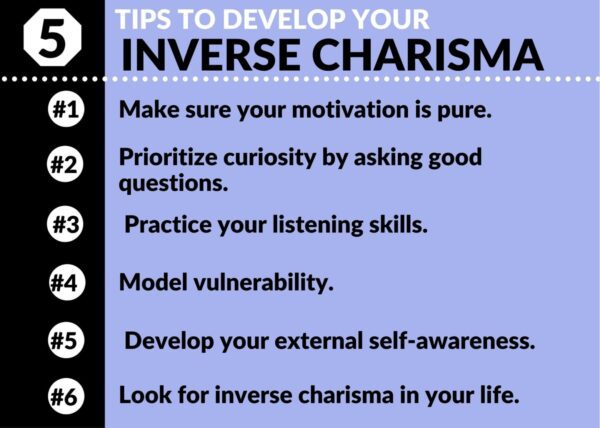Learn what inverse charisma is and how the term can redefine how you look at life.
I didn’t intend to tell my friend Lauren about my plan to sell custom board games. The idea still lacked clarity. Plus, it felt like a contradiction to the typical work she saw me do. I teach high schoolers American literature at a boarding school. Now I wanted to launch a board game side business? What was I thinking?
Sharing the newfound idea felt vulnerable, to say the least.
But this story isn’t about my idea or how I felt. It actually isn’t about me at all. This story is about my friend and the conversation she inspired.
Lauren and I found ourselves talking at a mutual friend’s bonfire. I think our interaction started with familiar “catch-up” questions. Yet, somewhere along the way, I found myself gushing about my new idea – an idea I expected to feel anxious or embarrassed by.
Surprisingly, I left feeling more confident and inspired about the idea than before.
When I reflect on the conversation, I recognize that Lauren said very little to transform my mood. She didn’t offer me some elaborate business strategy or board game wisdom. Instead, she gave me something that I’ve come to realize is far more powerful: a curiosity-driven presence and a listening ear. As a result, she made me feel more inspired in myself.
In other words, Lauren demonstrated inverse charisma.
.
What is Inverse Charisma?
The term “inverse charisma” first appeared in a biography about the writer E.M. Forster and made more public by Adam Grant in his new book Think Again. Yet, the powerful word is still relatively unknown, allowing us to define it for ourselves.
We’ve all probably heard of the terms “charisma” or “charismatic.” Charisma is defined as someone’s ability to attract, charm, and influence those around them. When we think of charismatic people, we think of that pull we feel toward them. They engage our attention and hold it; something about them “lights up” that compels us to gravitate toward them.
Some people debate the usefulness and value of charisma. However, we’re not here to talk about regular-ole charisma. We’re here to talk about a type of charisma that’s far more powerful.
Inverse charisma is someone’s ability to bring the best out of other people. They make the people around them more compelling through their presence and attitude. Not only have they made the conversation about you, but they’ve made you more interesting with their questions.
When you’re with someone with inverse charisma, you find yourself “lighting up” and excited to share. It’s not that people with inverse charisma have given you this “light.” Instead, they’ve given you the spark and space to shine the light that’s already within you.
.
.
Types of Conversations with our Inverse Charisma Definition
Let’s imagine that we can break all conversations into three distinct types. (Experts on interpersonal interactions would probably say three is an extreme oversimplification, but fortunately, I’m not one of those experts.)
Conversation Type One: You are seeking specific information from someone. As such, you will tailor your questions to what information you need.
Conversation Type Two: You are giving information to someone. Regardless of what or who it’s about, your mindset is that of, “I have this information, and this person doesn’t. Therefore, I will provide it to them.”
Conversation Type Three: You are open to letting the other person lead and control the information flow. You invite them to give you information, and even guide them along the way, but you’re still allowing them the choice of what that information is.
There’s nothing wrong with Conversation Types One and Two. Realistically, we wouldn’t get very far in our lives and work without them. There are important opportunities for Conversation Types One and Two.
Inverse charisma, you may have guessed, lies within Conversation Type Three.
Let’s go back to my initial story about the conversation with my friend Lauren. Neither she nor I had specific information that we needed to give or receive. Therefore, space existed for possibility. Lauren used her inverse charisma to encourage me to fill that possibility. In doing so, she helped release my excitement.
People with inverse charisma are excellent listeners. However, while listening is an element of inverse charisma, it’s not the only element. Someone must guide the interaction in a way that brings out more from the other person.
.
How You Define and Approach the Interaction
When I was little, I didn’t enjoy going out to eat. If my parents dragged me to a restaurant, I only ever ordered spaghetti. Chain restaurant? Spaghetti. Locally owned pub? Spaghetti. New family-owned joint? Thank goodness their kids’ menu has spaghetti.
I didn’t even consider looking at other items on the menu.
Fortunately, my pallet has evolved (although I still love spaghetti). But for years, I controlled my restaurant experience. Every time I walked into a place knowing what to order, I dictated my relationship with the restaurant before I even sat down.
In my mind, the goal was to order food I would like. I didn’t consider that it was meant to be an experience. And I definitely didn’t consider that part of it was the restaurant giving me an experience they inspired and created.
What does my spaghetti ordering story have to do with inverse charisma?
Many of us treat interactions like I treated going out to restaurants. We dictate our roles before even talking to someone. And when we go in with preconceived goals, we close ourselves off from the possibility that someone else can offer.
Had I demonstrated metaphorical inverse charisma, I would’ve gone into a restaurant excited to see the menu. I would’ve “asked” the restaurant, “What are you excited to share with me?” And then, even if I didn’t love my meal, I would’ve appreciated the intentionality that went into it.
This is how people with inverse charisma approach interactions and relationships.
.
Defining Inverse Charisma is all about Curiosity and Humility
In his book Think Again: The Power of Knowing What You Don’t Know, psychologist Adam Grant discusses the importance of listening and presence when interacting with others. He also lists two essential qualities in this unity: curiosity and humility. To live with inverse charisma, you must possess both.
People with inverse charisma aren’t just good at asking questions; they genuinely want to learn about your answers. Think about those conversations when you get follow-up question after follow-up question because your listeners want to learn more. When we feel this authentic curiosity in what we’re doing, it’s difficult not to get excited to share more.
The second important quality is humility. Humility comes through in someone’s willingness to keep an open mind about what they’re hearing. They must demonstrate the humility to step back, allow someone else to lead the conversation, and withhold their judgments.
Now, inverse charisma shouldn’t be confused with berating someone with questions and shutting down any personal opinions. It’s a human interaction, after all, and humans come with opinions and ideas. People with inverse charisma don’t hold back everything they want to say; instead, they suspend any judgments as they listen.
They take on a role of guide rather than leader.
.
Inverse Charisma Encourages People to Think More Deeply
I just celebrated my fourth year together with my fiancé. We’ve come a long way in terms of healthy communication (and there’s still work yet to be done, right honey?!?). A primary obstacle we had to overcome rested in our different communication styles. I love asking questions and learning more; he likes to wait for someone else to lead the conversation.
But while I’d tend to get more information from our conversations, an air of judgment or control attached itself to my curiosity. Yes, I want to learn more – but I had plans to use this “more” (often driven by emotions I didn’t recognize). As a result, he became defensive and hid things.
Meanwhile, my fiancé came to every conversation with a genuine acceptance. He listened to my stories and radiated understanding; I knew that, no matter what I said, he’d accept my thinking as worthy in and of itself.
But, if I didn’t take the initiative to share, he never knew what was happening in my head. I’d fold up my vulnerability and lock it out of sight.
Tackling the communication challenges in a partnership is far too complex to address in this post. However, I think we can all learn something from my fiancé and my strengths. As we learned to adopt each other’s abilities, I began to see the power of this combination.
A genuine curiosity mixed with an unabashed acceptance unlocked far more than better conversations. It unlocked our authentic selves.
.
Inverse Charisma Radiates Acceptance and Creates Trust
Too often, we feel defensive or fearful of speaking our truth. Our need for belonging flares up, and our fear of rejection stifles our authenticity. We feel vulnerable.
People with inverse charisma build a bubble of acceptance through their curiosity and humility. They don’t just listen; they encourage someone with their presence, affirmations, and further questions. In doing so, they form a pocket of trust.
According to Adam Grant, experiments have proven that interacting with “an empathetic, nonjudgmental, attentive listener” made people less anxious and defensive. He writes in his new book, “They felt less pressure to avoid contradictions in their thinking, which encouraged them to explore their opinions more deeply, recognize more nuances in them, and share them more openly.”
Inverse charisma puts someone else on the stage with the spotlight shine. Then they stand in the front row of the audience, ready to clap throughout the show.
.
How to Develop Your Inverse Charisma
Inverse charisma is a fantastic quality to have. People with inverse charisma at work will help build up their coworkers and champion new ideas. Interpersonal relationships will flourish when inverse charisma instills confidence and trust in one another.
Whether in a one-time conversation or a long-term relationship, inverse charisma will bring out the best of the people around you.
Follow these six tips to develop your inverse charisma.
-
Make sure your motivation is pure.
If you want to develop your inverse charisma to become more successful, you’re starting in the wrong place. At the core of inverse charisma is that it makes other people better. Therefore, you must be motivated by bettering other people, not yourself. Will it make you a better friend, family member, relative, coworker, partner, etc.? Yes – but only if your focus is generous, not self-serving.
-
Prioritize curiosity by asking good questions.
Curiosity is not something you turn on and off. It’s a mindset, and you’ve got to prioritize it if you want to embody what it means. When we’re curious, we allow ourselves to expand our thinking – and our world. Approach every situation with the attitude of, “What can I learn from this?” You’ll be amazed by what there is to learn. You’ll also develop your ability to ask good questions in your search for new ideas.
-
Practice your listening skills.
It’s not our natural tendency to be good listeners. For many reasons, our biology and cultural conditioning have made it difficult for us to be present and engaged while others are talking. However, as much as some of us may think we mask our poor listening skills well, a lack of presence will hurt our inverse charisma. When we fully focus in, we give energy to a conversation that allows other people to get excited to share more.
-
Model vulnerability.
People may not think of vulnerability when it comes to other people talking. However, vulnerability is far more than merely sharing personal information about ourselves. (Or any of these other cultural myths about vulnerability.) When we choose to give our entire presence to someone else and commit ourselves to their direction, we’re being vulnerable. After all, we don’t know where this person will lead us or what they’ll ask of us. Inverse charisma requires us to go all in.
-
Develop your external self-awareness.
We often associate self-awareness with understanding ourselves, but external self-awareness is just as critical. When we’re externally self-aware, we understand our impact on other people. It’s easy to see why this is important for inverse charisma. We must be able to recognize how we’re coming off in an interaction. Additionally, we must understand what someone else needs to feel supported and inspired.
-
Look for inverse charisma in your life.
Inverse charisma is a new term, and therefore, full of possibility. When we put language into defining something, we can begin to identify more in our lives. Look for displays of inverse charisma in your life. When do you leave a conversation feeling more inspired and confident in yourself? Who in your life gives you their full engagement and curiosity? Take note of their qualities, and then practice them in your actions.
.
Conclusion: What Is Inverse Charisma?
People with inverse charisma can make others more compelling. Through curiosity, humility, and encouragement, they make the people around them better. This ability can have hugely positive effects on people’s moods, courage, and relationships.
If you’re interested in learning more about inverse charisma, and how self-awareness can help you build this quality, subscribe below. (I promise to never spam my subscribers – although I can’t promise that you won’t receive bad “unsubscribe jokes” in my weekly newsletter.)


